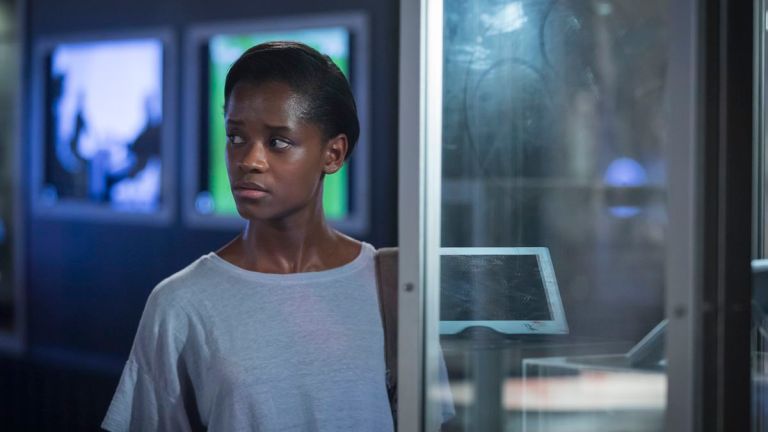Black Mirror Season 4 Episode 6: Black Museum Review
It's an anthology within an anthology to close out Black Mirror season 4.

There are a few metaphors you can hand out to the final episode of Black Mirror season 4. It’s the Ripley’s Believe it or Not, or Island of Misfit Toys, or as the main character Rolo Haynes says, the “Madame Tussauds” of Black Mirror episodes. “Black Museum” is an anthology within an anthology, a narrative structure we’ve seen on the show before with the “White Christmas” special starring the irreplaceable Jon Hamm. There are quite a few parallels to be made between “Black Museum” and “White Christmas,” though the former fails to reach the emotional highs and gut-wrenching twists of the latter.
What “Black Museum” does bring us are three loosely intertwined stories that could have been fleshed out into full episodes, but still work well in abridged form here. While he’s no Jon freaking Hamm, our tour guide in the Black Museum is the seedy opportunist Rolo Haynes, played by Douglas Hodge. Haynes’ Black Museum is a highway attraction out in the desert that houses artifacts of criminology. When a young woman named Nish, played by Letitia Wright, enters the museum with time to kill, it allows Haynes to wax poetic about the origins of these artifacts, and that’s where we get into the Black Mirror-y goodness of the episode.
The first story is about Haynes convincing a doctor to undergo a procedure that allows the doctor to feel the full sensitivity of his patients to better understand their diagnosis. You could get a whole series out of that concept, and it feels like a missed opportunity for series creator Charlie Brooker to not flesh that out into a whole episode. At first, the doctor is consistently performing miracles. Not only is he saving lives, but the doctor is also using the device for pleasure in the bedroom. Male and female orgasms. He’s living his best life! Only there has to be a “but.” The feeling of pain becomes an addiction. Soon he has to harm himself or others to get his fix, which lends itself to some of the more gruesome scenes of the season.
So Haynes’ company had to reassess that technology. In the next story, he recalls a mother who tragically enters a coma, leaving behind her young son and partner. Haynes offers the partner a chance to keep the woman in his life by transferring her consciousness into his brain, thus giving her the chance to feel all of the things he feels and communicate in his head. At first it’s great, because he preserves the woman he loves and allows her to be in her son’s life as he grows up. But having a permanent “backseat driver” in your head sounds more like a nightmare than a solution. The dilemma between lovers takes up much of what’s left of the episode.
Unfortunately, they cram in why Nish is alone on a barren stretch of road and chooses to go into Black Museum in the first place. She’s there for retribution. Haynes’ main attraction is a virtual hologram of her father, a convinced murderer. When Haynes’ called the place a “Living Madame Tussauds,” he wasn’t kidding. He has a fully conscious upload of the murderer, who we hear about on the television in the previous two stories, and allows guests to do an execute and take home a souvenir of the man’s torture.
The connective tissue throughout the episode is how we experience pain, physically and mentally. What are the ethics of your conscious once it leaves the body? It’s one thing when you put a woman into a teddy bear, but the government clearly has overlooked the torture of a deceased inmate’s digital presence. Seeing anyone, even a murder, dehumanized for a highway attraction is a tough sight.
While “Black Museum” raises some thought-provoking ethical questions, it doesn’t really hang around long enough do any of them justice, though Nish and her mom can finally be at peace. Still, I’d like to see a Rolo Haynes spinoff and find out what other technological misfires exist in the Black Museum.
